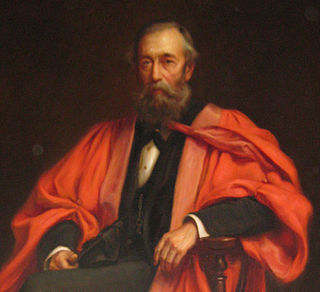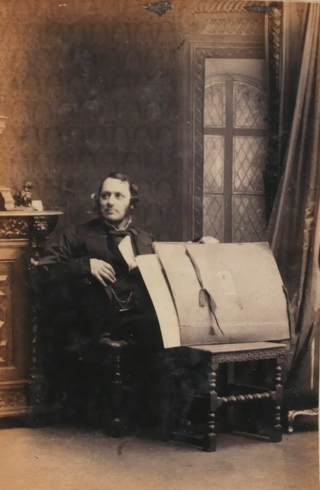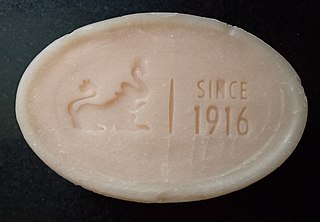
Pentane is an organic compound with the formula C5H12—that is, an alkane with five carbon atoms. The term may refer to any of three structural isomers, or to a mixture of them: in the IUPAC nomenclature, however, pentane means exclusively the n-pentane isomer, in which case pentanes refers to a mixture of them; the other two are called isopentane (methylbutane) and neopentane (dimethylpropane). Cyclopentane is not an isomer of pentane because it has only 10 hydrogen atoms where pentane has 12.

Henry Clifton Sorby was an English amateur microscopist and geologist. His major contribution was the development of techniques for thin sectioning of rocks and minerals with polarized light under a microscope which was also extended to study iron and steel, his family having being involved in the Sheffield iron and steel industry for generations. He also contributed to the study of meteorites by introducing a method of blowpipe analysis where molten beads were flattened for microscopic study. He was elected Fellow of the Royal Society in 1857.

An ionic liquid (IL) is a salt in the liquid state at ambient conditions. In some contexts, the term has been restricted to salts whose melting point is below a specific temperature, such as 100 °C (212 °F). While ordinary liquids such as water and gasoline are predominantly made of electrically neutral molecules, ionic liquids are largely made of ions. These substances are variously called liquid electrolytes, ionic melts, ionic fluids, fused salts, liquid salts, or ionic glasses.

Copper(I) chloride, commonly called cuprous chloride, is the lower chloride of copper, with the formula CuCl. The substance is a white solid sparingly soluble in water, but very soluble in concentrated hydrochloric acid. Impure samples appear green due to the presence of copper(II) chloride (CuCl2).
The Bischler–Möhlau indole synthesis, also often referred to as the Bischler indole synthesis, is a chemical reaction that forms a 2-aryl-indole from an α-bromo-acetophenone and excess aniline; it is named after August Bischler and Richard Möhlau .
The Cook–Heilbron thiazole synthesis highlights the formation of 5-aminothiazoles through the chemical reaction of α-aminonitriles or aminocyanoacetates with dithioacids, carbon disulphide, carbon oxysulfide, or isothiocyanates at room temperature and under mild or aqueous conditions. Variation of substituents at the 2nd and 4th position of the thiazole is introduced by selecting different combinations of starting reagents.

George Bowdler Buckton was an English chemist and entomologist who specialised in aphids.

Sir James Walker FRS FRSE FCS LLD was a Scottish chemist. He worked mainly on inorganic and physical chemistry. His major contribution was in the study of chemical reaction kinetics based on a study of the reactions converting ammonium cyanate to urea which was published in 1895 along with Frederick J. Hambly (1878-1960).
Sir Arthur Herbert Church was a British chemist, expert on pottery, stones and chemistry of paintings, who discovered turacin in 1869 and several minerals, including the only British cerium mineral. He was also a talented artist and worked as a professor of chemistry at the Agricultural College in Cirencester and then at the Royal Academy of Arts. He wrote extensively on aspects of chemistry in agriculture, art, and daily life.
Geoffrey Edward Coates was a British organometallic chemist and academic. He developed the basics for new materials in plastics, semiconductors and pharmaceuticals.
In organic chemistry, the Cornforth rearrangement is a rearrangement reaction of a 4-acyloxazole in which the group attached to an acyl on position 4 and the substituent on position 5 of an oxazole ring exchange places. It was first reported in 1949, and is named for John Cornforth. The reaction is used in the synthesis of amino acids, where the corresponding oxazoles occur as intermediates.
The Longstaff Prize is given to a member of the Royal Society of Chemistry who has done the most to advance the science of chemistry. First awarded in 1881, it was originally conferred by the Chemical Society and known as the Longstaff Medal.
William James Stewart Lockyer was an English astronomer and physicist. His work included studies on sunspot cycles and is remembered for what is now known as the Brückner-Egeson-Lockyer cycle.
George Gerald Henderson was a chemist and professor at the University of Glasgow. He was known for his work on terpenes.
Charles Rugeley Bury was an English physical chemist who proposed an early model of the atom with the arrangement of electrons, which explained their chemical properties, alongside the more dominant model of Niels Bohr. In some early papers, the model was called the "Bohr-Bury Atom". He introduced the word transition to describe the elements now known as transition metals or transition elements.

Sosale Garalapury Sastry was an Indian industrial chemist known for his work on the manufacture of sandalwood soap through the establishment of the Mysore soap factory in Bangalore. This earned him the nickname of Soap Sastry. He also served as a director of industries and commerce in Mysore State.

Andreas Smits was Dutch chemist who specialized in physical and inorganic chemistry and examined aspects of phase change and conversions between allotropic forms. He was a professor at the Delft University of Technology and University of Amsterdam.
John Albert Newton Friend was a British chemist and educator who specialized in the chemistry of corrosion and its prevention. He was among the first to note that chromium enhances the corrosion resistance of steel. He edited a multi-volume textbook of inorganic chemistry.

Frederick Daniel Chattaway was an English organic chemist. He served as a professor of chemistry at Queen's College, Oxford, where he pioneered research in organic chemistry. He was also interested in nitrogen halides, anilides, and amides.
Harry Medforth Dawson was a professor of physical chemistry at the University of Leeds. He studied chemical kinetics, reaction mechanisms involving complex ions and their equilibria. He was elected Fellow of the Royal Society in 1933.











